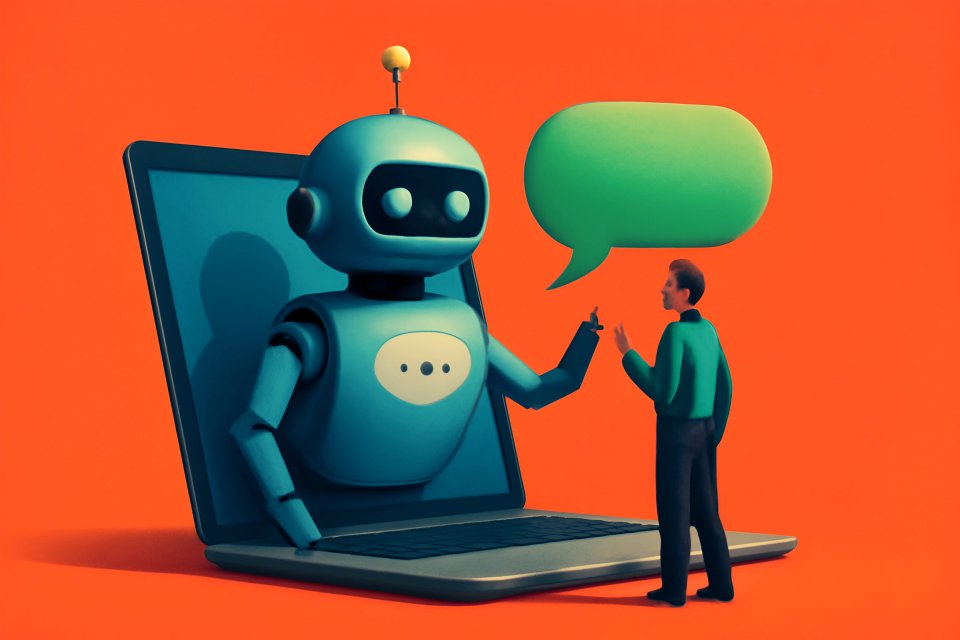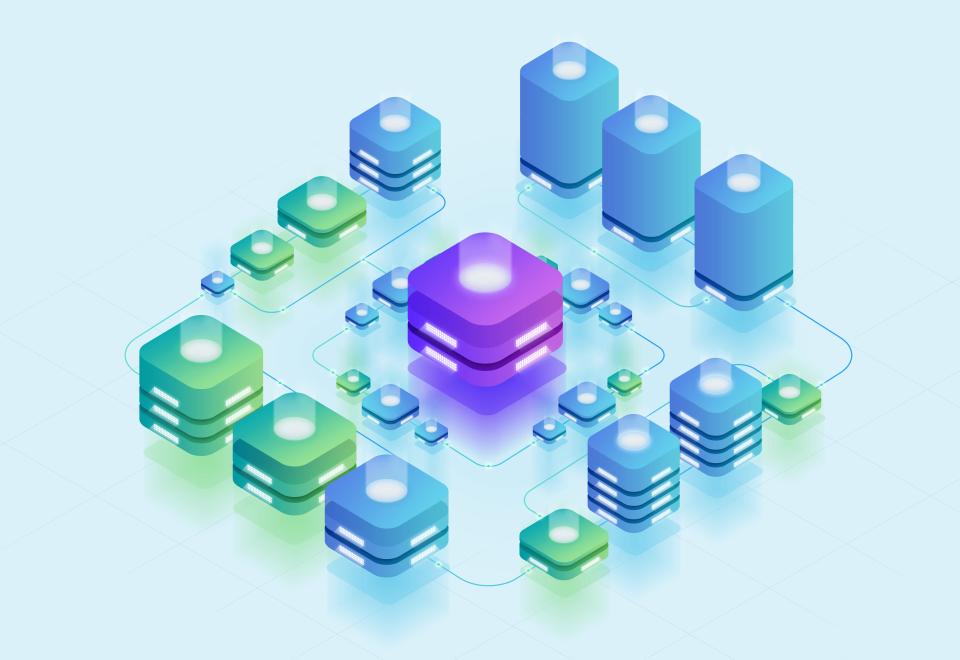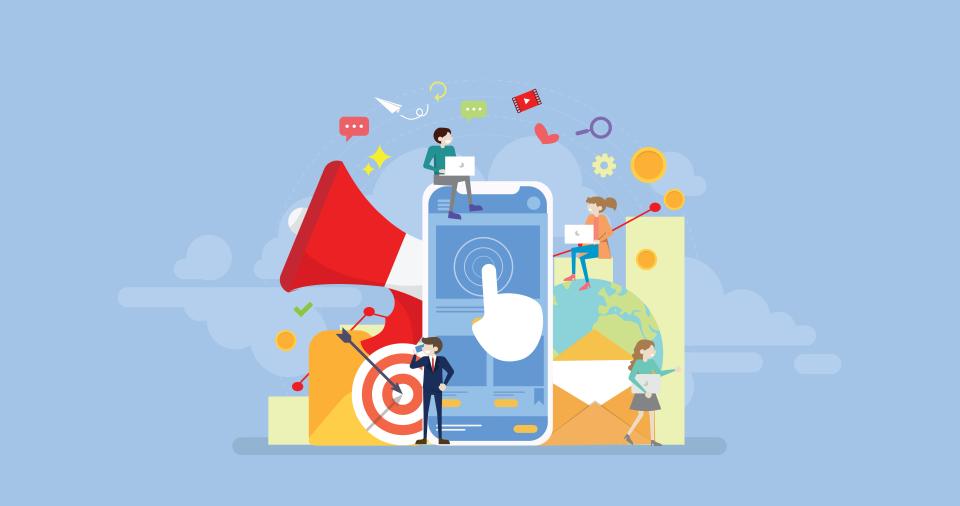Are your website visitors slipping away, their crucial questions unanswered? Is your dedicated team drowning in a sea of repetitive inquiries, pulling them from vital, growth-focused tasks? You're not alone in this struggle, but what if there was a way to instantly connect, captivate, and convert every visitor, day or night?
The digital landscape is undergoing a seismic shift, powered by the relentless advance of Artificial Intelligence. AI isn't just a buzzword; it's actively reshaping how businesses interact with their customers, creating experiences that are smarter, faster, and more personal than ever before. Imagine harnessing this power directly on your website, turning it into a dynamic, responsive hub of customer interaction.
Enter AI chatbots: your tireless digital ambassadors. These sophisticated programs are designed to simulate human conversation, providing instant support, gathering valuable information, and guiding users through your website with effortless grace. This isn't about replacing human touch; it's about augmenting it, ensuring no customer feels ignored and every interaction has purpose. This post will unpack how integrating AI chatbots can dramatically boost customer engagement, streamline your support operations, and ultimately supercharge your conversions, covering the undeniable benefits, smart integration strategies, and essential best practices to make it happen.
Why AI Chatbots Are a Game-Changer for Website Engagement
The digital world never sleeps, and neither should your customer service. AI chatbots are not just a fancy add-on; they are a fundamental evolution in how you connect with your audience, offering tangible benefits that resonate directly with your bottom line and your customers' deepest desires for instant gratification and seamless experiences. Prepare to see your website transform from a static brochure into a dynamic, engaging powerhouse.
24/7 Availability & Instant Responses
Picture this: a potential customer lands on your site at 2 AM with an urgent question. Without a chatbot, they're likely to leave, perhaps forever. With an AI chatbot, they receive an immediate, helpful response, satisfying their need for instant information. This round-the-clock presence meets modern customer expectations head-on; Salesforce research highlights how Einstein AI-powered chatbots provide immediate support, drastically reducing those frustrating wait times.
This instant gratification isn't just convenient; it's crucial for retention. Long delays are a primary source of customer frustration, leading to lost sales and damaged brand perception. AI chatbots obliterate these delays, ensuring every visitor feels acknowledged and valued, no matter the hour. According to Gartner, leading conversational AI platforms like Boost.ai (recognized as a Challenger in their 2023 Magic Quadrant) can achieve impressive resolution rates, with some, like Boost.ai, reporting up to 90% of inquiries resolved without human intervention (Source: Gartner Magic Quadrant for Enterprise Conversational AI Platforms).
Ultimately, this constant availability translates into a feeling of security and reliability for your customers. They know they can count on you, fostering trust and loyalty. This isn't just customer service; it's customer assurance, delivered efficiently and effectively.
Enhanced Customer Experience (CX) & Satisfaction
Want customers who rave about you, not just tolerate you? A superior customer experience is your golden ticket. AI chatbots, when thoughtfully implemented, can deliver personalized interactions that make visitors feel understood and catered to. Imagine a chatbot that remembers a returning customer's preferences or guides a new user to exactly what they need, without them having to search.
This level of tailored engagement is amplified by a consistent brand voice. Your chatbot becomes an extension of your brand, delivering information with the same tone and accuracy every single time. This consistency builds trust and reinforces your brand identity, a core component of the expert UI/UX and Branding services offered by CaptivateClick. Zendesk's CX Trends Report, while noting past frustrations, also points to the potential: when done right, chatbots contribute positively, but 60% of customers have expressed frustration with chatbots in the past (Source: Zendesk CX Trends Report 2022), highlighting the need for careful design.
By providing swift, relevant, and personalized assistance, AI chatbots directly boost customer satisfaction. Happy customers are more likely to convert, return, and recommend your business. This creates a virtuous cycle of positive experiences and business growth, turning casual browsers into loyal advocates.
Increased Lead Generation & Qualification
Is your website a passive bystander, or an active participant in your sales process? AI chatbots can transform your site into a lead generation machine, working tirelessly to identify and capture potential customers. They can proactively engage visitors who linger on a pricing page or show interest in specific services, initiating conversations that convert curiosity into concrete leads.
These digital assistants are adept at asking targeted qualifying questions. "What's your biggest challenge right now?" or "Are you looking for solutions for a small business or an enterprise?" Such questions help segment your audience and gather crucial contact information, seamlessly feeding your sales funnel. This proactive approach aligns perfectly with CaptivateClick's proven Lead Generation strategies, ensuring no potential opportunity is missed. For instance, HubSpot’s chatbot integration with its CRM allows businesses to automate lead qualification and book meetings directly through chat.
By automating the initial stages of lead capture and qualification, your sales team can focus their energy on high-potential prospects who are already warmed up and informed. This efficiency not only boosts conversion rates but also makes your entire sales process more potent and profitable. You can explore more on this topic by understanding AI-powered lead generation strategies.
Reduced Operational Costs & Improved Team Efficiency
Imagine slashing your customer support costs while simultaneously empowering your human team to tackle more complex, high-value tasks. This isn't a far-fetched dream; it's a reality made possible by AI chatbots. They excel at automating responses to frequently asked questions – the kind that consume a significant chunk of your support agents' time.
This automation directly translates into significant cost savings. IBM research reveals that chatbots can reduce customer service costs by up to 30% (Source: IBM’s Chatbot Cost Reduction Study). The same study highlights that chatbots can handle as much as 80% of routine customer inquiries, a massive offload for any support department.
With chatbots managing the frontline, your skilled human agents are liberated. They can dedicate their expertise to resolving intricate issues, providing in-depth consultations, and fostering deeper customer relationships. This not only improves overall efficiency but also boosts employee morale, as they focus on more engaging and impactful work.
Valuable Data Collection & Customer Insights
What if your website could tell you exactly what your customers are thinking, what they're struggling with, and what they truly desire? AI chatbots are not just conversationalists; they are invaluable data collectors. Every interaction is a goldmine of insights into common customer pain points, frequently asked questions, and emerging trends.
This data is pure fuel for your business strategy. By analyzing chat logs, you can identify gaps in your content, areas for product or service improvement, and opportunities to refine your marketing messages. This direct line to customer sentiment can inform everything from your Conversion Optimization efforts to your overarching Brand Strategy, ensuring your decisions are data-driven and customer-centric. For example, HubSpot’s platform allows for unified customer data, enabling chatbots to deliver tailored experiences based on past interactions and collected data.
Understanding your customers at this granular level allows you to proactively address their needs, often before they even articulate them. This deep empathy, powered by data, is what separates thriving businesses from the rest. It’s about transforming raw data into actionable intelligence that drives growth and customer loyalty.
Key Considerations Before Integrating an AI Chatbot
Jumping onto the AI chatbot bandwagon without a clear map can lead you astray. To truly harness their power and avoid common pitfalls, thoughtful planning is paramount. Before you dive in, take a moment to consider these crucial factors – they’ll be the bedrock of your chatbot success story.
Defining Your Objectives
Why do you really want a chatbot? Is it to slash support tickets, capture more leads, guide users to purchase, or simply provide instant information? Without a crystal-clear objective, your chatbot project can lack direction and deliver underwhelming results. Define specific, measurable, achievable, relevant, and time-bound (SMART) goals.
For instance, your goal might be "Reduce customer support email volume by 20% within three months" or "Increase qualified leads from the website by 15% in the next quarter." These precise targets will guide your chatbot's design, functionality, and the metrics you use to gauge its success. Knowing your primary_goal is the first step to victory.
A well-defined objective also helps you communicate the chatbot's purpose to your team and, importantly, to your users. It ensures everyone understands what the chatbot is there to do and how it contributes to the bigger picture of your business success.
Understanding Your Audience & Their Needs
Who are you talking to? What keeps them up at night? What are the common roadblocks they hit on your website? Deeply understanding your audience is non-negotiable for creating a chatbot that truly resonates and adds value, rather than becoming a source of frustration.
Map out typical customer journeys on your website. Identify points where users might get stuck, have questions, or need guidance. What are their most frequent inquiries? What tone of voice do they respond to best – formal and professional, or friendly and casual? This insight will shape your chatbot's personality and conversation flows.
The Zendesk CX Trends Report found that 55% of customers were dissatisfied with inaccurate bot responses (Source: Zendesk CX Trends Report 2022), underscoring the importance of aligning chatbot capabilities with actual user needs and queries. Don't assume; research and listen to what your audience is telling you through their behavior and feedback.
Choosing the Right Chatbot Type & Platform
Not all chatbots are created equal. You'll encounter a spectrum, from simple rule-based chatbots that follow predefined scripts to sophisticated AI/NLP-powered chatbots that understand natural language and learn from interactions. The choice depends heavily on your objectives, audience complexity, and budget.
Rule-based bots are often quicker to set up and more affordable for straightforward tasks like answering basic FAQs. AI/NLP-powered bots, however, offer more dynamic, human-like conversations and can handle a wider range of queries. Consider whether an off-the-shelf solution from providers like those evaluated in Gartner’s Magic Quadrant for Enterprise Conversational AI Platforms (Source: Gartner) will suffice, or if custom development is necessary for unique requirements and deeper integrations with your existing CRM or website platform (like WordPress or Shopify).
Think about scalability too. Will your chosen platform grow with your business needs? Does it offer the integrations crucial for your workflow, such as connecting to your sales or support software? Making the right platform choice now saves headaches later.
Data Privacy & Security
In an age of heightened awareness around data protection, how your chatbot handles customer information is critically important. You're not just building a helpful tool; you're creating a custodian of potentially sensitive data. Neglecting privacy and security can lead to severe reputational damage and hefty fines.
Ensure your chatbot solution and data handling practices are compliant with relevant regulations like GDPR in Europe or CCPA in California. The EU AI Act, for example, imposes strict transparency requirements, such as clearly disclosing when users are interacting with an AI system, and non-compliance can lead to penalties of up to 3% of global revenue (Source: EU AI Act Compliance). Be transparent with users about what data you collect and how it's used.
Work with your legal team and IT department to establish robust security protocols. This includes secure data storage, encryption, and access controls. Prioritizing data privacy isn't just a legal obligation; it's fundamental to building trust with your customers, a service that CaptivateClick’s Security & Updates offerings can help you navigate.
Budget & Resources
Let's talk brass tacks: integrating an AI chatbot involves costs. These can range from initial setup fees and potential subscription costs for SaaS platforms to development expenses if you're building a custom solution. Don't forget ongoing maintenance, updates, and the human resources needed to manage and optimize the chatbot over time.
Factor in the cost of training your team to work alongside the chatbot, especially for human handoff procedures. While chatbots can significantly reduce operational costs in the long run, as IBM’s study showing a 30% cost reduction suggests (Source: IBM’s Chatbot Cost Reduction Study), it's crucial to have a realistic upfront budget.
Evaluate the potential return on investment (ROI). How will the chatbot contribute to your defined objectives – increased sales, reduced support costs, higher customer satisfaction? A clear understanding of both the investment required and the expected benefits will help you make an informed decision and secure necessary buy-in from stakeholders.
Step-by-Step: Integrating AI Chatbots into Your Website (The "How-To")
Alright, you're convinced of the "why" and you've pondered the critical considerations. Now, let's get down to the "how." Integrating an AI chatbot isn't just flipping a switch; it's a thoughtful process. Follow these steps to ensure your chatbot becomes a valuable asset, not a digital nuisance.
Step 1: Research & Platform Selection
This step circles back to your initial considerations but with a focus on action. Armed with your defined objectives, audience insights, and budget, it's time to rigorously evaluate chatbot platforms or development partners. Look beyond flashy features; prioritize solutions that genuinely meet your specific needs.
Compare rule-based versus AI/NLP options. Investigate integration capabilities with your existing tech stack – your CRM, e-commerce platform, and help desk software are key. Read reviews, request demos, and perhaps even run small pilot programs if possible to see which platform feels like the best fit for your operational workflow and technical expertise.
Remember, the goal is to find a solution that is not only powerful but also manageable for your team. A complex system that no one knows how to update or optimize will quickly become obsolete.
Step 2: Design the Conversation Flow & User Interface
This is where the magic begins to take shape. How will your chatbot actually talk to your users? You need to map out common conversational paths, anticipating user questions and designing logical, helpful responses. Think like your customer: what information would they seek, and in what order?
The chatbot's appearance and interface are equally crucial. It should seamlessly blend with your website's design and branding, feeling like an integral part of the experience, not a tacked-on afterthought. This is where CaptivateClick's expertise in UI/UX Design and Visual Identity can make a significant difference, ensuring the chatbot is both aesthetically pleasing and incredibly user-friendly.
Keep the interface clean, intuitive, and easy to navigate. Use clear calls to action and ensure that options are presented logically. A clunky or confusing chatbot UI will drive users away faster than you can say "engagement."
Step 3: Develop & Train Your Chatbot
With your conversation flows mapped and UI designed, it's time to bring your chatbot to life. For rule-based bots, this involves meticulously inputting your FAQs, knowledge base articles, product information, and predefined conversational scripts. Accuracy and comprehensiveness are key here.
For AI-powered chatbots, the process involves "training" the AI with relevant datasets. This might include historical chat logs (anonymized, of course), industry-specific terminology, and examples of various user intents and questions. The more quality data you feed the AI, the smarter and more effective it will become at understanding and responding to natural language.
This isn't a one-time task. Ongoing training and refinement will be necessary as your business evolves, new questions arise, and you gather more data on user interactions. Think of your chatbot as a learning entity that gets better over time with consistent nurturing.
Step 4: Technical Integration
Now for the nuts and bolts: getting the chatbot onto your website and working smoothly. Depending on the platform you've chosen, this might involve embedding a simple code snippet into your website's HTML, installing a plugin (common for platforms like WordPress), or utilizing more complex API integrations for deeper connections with your backend systems.
Ensure the chatbot functions flawlessly across different browsers and devices. A chatbot that works perfectly on desktop but breaks on mobile is a recipe for user frustration. This is where robust Web Development capabilities, like those offered by CaptivateClick, are invaluable to ensure seamless technical execution. Consider how technical optimization impacts overall site performance and SEO, as a slow site can hinder chatbot effectiveness.
Test the integration thoroughly on a staging environment before going live. Check for conflicts with existing website scripts or functionalities. A smooth technical rollout is crucial for a positive first impression.
Step 5: Test Rigorously
Before unleashing your chatbot on your unsuspecting audience, you must put it through its paces. Rigorous testing is non-negotiable. Test every conceivable scenario, from common questions to obscure queries, and even intentionally try to "break" it with confusing or nonsensical inputs.
Pay close attention to the handoff process if you're offering an option to connect with a human agent. Is it smooth? Does the agent receive the necessary context from the chatbot conversation? Zendesk’s data showing 60% of customers are frustrated with chatbots (Source: Zendesk CX Trends Report 2022) often stems from poor design and lack of testing, leading to unhelpful interactions.
Gather feedback from an internal team first. Let them interact with the chatbot as if they were customers and report any issues, awkward phrasing, or dead ends. This internal beta testing phase, akin to CaptivateClick's A/B Testing & Performance Tracking approach, will help you iron out kinks before your actual customers encounter them.
Step 6: Launch & Monitor Performance
The moment of truth has arrived! Once you're confident in your chatbot's abilities, it's time to launch. Depending on your strategy, you might opt for a soft launch on specific pages or a full rollout announced to your audience.
But the work doesn't stop at launch. Continuous monitoring is vital to understand how your chatbot is performing and to identify areas for improvement. Track key metrics such as resolution rate (how many queries are solved by the bot), engagement time, escalation rate (how often users ask for a human), and, if applicable, leads generated or conversions assisted. Tools like Chatbase provide analytics to track such metrics (Source: Chatbase Analytics Guide), including goal completion rates and even sentiment analysis.
Use these insights to refine conversation flows, update the knowledge base, and enhance the chatbot's overall effectiveness. The launch is just the beginning of an ongoing optimization journey.
Best Practices for Maximizing Chatbot Effectiveness
Launching a chatbot is one thing; ensuring it consistently delights users and delivers on its promise is another. It’s about finesse, user-centricity, and a commitment to continuous improvement. Adopt these best practices, and your AI chatbot will become an indispensable asset for stellar customer engagement.
Set Clear Expectations
Transparency is your friend. Let users know upfront that they are interacting with an AI chatbot, not a human. This manages expectations and can prevent frustration if the bot can't handle a particularly complex or nuanced query.
Clearly communicate the chatbot's capabilities and limitations. For example, a simple welcome message could be: "Hi! I'm [Your Brand]'s virtual assistant. I can help with [task 1], [task 2], and [task 3]. For more complex issues, I can connect you to a human team member." This honesty builds trust from the get-go.
Setting these boundaries helps users understand how to best interact with the bot for a successful outcome. It’s about guiding them to use the tool effectively.
Always Provide a Human Handoff Option
No matter how intelligent your AI chatbot becomes, there will always be situations it can't handle or users who simply prefer to speak with a person. Forcing users into a frustrating loop with a bot that doesn't understand them is a surefire way to lose their goodwill. Therefore, always provide a clear and easy way to escalate the conversation to a human agent.
This handoff should be seamless. Ensure that when a conversation is transferred, the human agent receives the full chat transcript and any relevant customer information already gathered by the bot. This avoids forcing the customer to repeat themselves, a major annoyance. Zendesk advocates for seamless human handoffs (Source: Zendesk CX Trends Report) as a critical practice to prevent user frustration and improve overall service quality.
Think of the chatbot as a highly efficient filter, handling the routine so your human team can focus on the exceptions that truly require their expertise and empathy.
Maintain Your Brand Voice & Personality
Your chatbot is an extension of your brand. Its language, tone, and even its "personality" (if you choose to give it one) should be perfectly aligned with your overall brand identity. Consistency here is key to a cohesive customer experience.
If your brand is playful and informal, your chatbot can reflect that. If your brand is more formal and authoritative, the chatbot's communication should mirror this. This attention to detail reinforces your brand image and makes the interaction feel more natural and integrated. CaptivateClick’s Brand Guidelines service can help you define and implement this consistent voice across all touchpoints, including your chatbot.
Avoid generic, robotic language. Injecting a bit of personality (that’s on-brand) can make the interaction more engaging and memorable. Remember, you're aiming for helpful and human-like, even if it's clearly a bot.
Keep it Simple & Focused
Don't try to build a chatbot that can do everything under the sun from day one. Start with a clear, focused purpose – perhaps handling the top 5-10 most common customer inquiries or guiding users through a specific process like booking an appointment. A chatbot that tries to do too much often ends up doing nothing well.
Complexity is the enemy of user experience. Keep conversation flows straightforward and intuitive. Avoid overwhelming users with too many options or asking too many questions at once. The goal is to make it easy for users to get the information or assistance they need quickly.
As your chatbot proves its value and you gather more data, you can gradually expand its capabilities. But start simple, execute flawlessly, and then iterate.
Personalize Where Possible
Leverage the data you have (ethically and with consent, of course) to make chatbot interactions more personal and relevant. If a user is logged in, the chatbot could greet them by name. If they've previously browsed specific products, the chatbot could offer related information or assistance.
This kind_of_personalization makes users feel recognized and valued, transforming a generic interaction into a more tailored experience. For example, HubSpot’s CRM integration enables personalized chatbot interactions by drawing on existing customer data to inform conversations. Even small touches, like remembering a previous query, can significantly enhance the user's perception of the service.
However, be mindful of privacy. Ensure users understand how their data is being used to personalize the experience and always provide control over their information.
Regularly Review & Optimize
Your chatbot is not a "set it and forget it" tool. To maintain its effectiveness and ensure it continues to meet user needs, you must commit to regular review and optimization. This is an ongoing process of refinement.
Analyze chat logs frequently. What questions are users asking that the bot can't answer? Where are conversations breaking down? Are there common points of frustration? This data is invaluable for identifying areas for improvement. This continuous improvement cycle is central to CaptivateClick's Performance Optimization services.
Update your chatbot’s knowledge base with new information, refine its conversation flows based on user behavior, and tweak its responses for clarity and helpfulness. The digital landscape and customer expectations are always evolving, and your chatbot must evolve with them.
Ensure Mobile Responsiveness
A significant portion of your website traffic likely comes from mobile devices. Therefore, your AI chatbot must provide a flawless experience on smartphones and tablets. A chatbot that is clunky, difficult to navigate, or unreadable on a smaller screen will frustrate users and negate its benefits.
The chatbot interface should adapt seamlessly to different screen sizes, with easily tappable buttons and legible text. Test its performance thoroughly on various mobile operating systems and devices. Given the importance of mobile, understanding mobile-first web design trends is crucial for ensuring your entire site, including your chatbot, performs optimally.
Mobile responsiveness isn't just a best practice; it's a necessity in today's mobile-first world. Ignoring it means alienating a large segment of your audience.
Real-World Examples: AI Chatbots Driving Success
Theory is great, but seeing AI chatbots in action, delivering tangible results, truly brings their power to life. Businesses across industries are already leveraging these intelligent assistants to boost engagement, streamline operations, and drive serious growth. Let's look at how they're making a real-world impact.
An e-commerce giant, much like Sephora with its Virtual Artist chatbot, experienced a 44% increase in engagement and a remarkable 25% boost in sales (Source: Sephora Virtual Artist Case Study). Their chatbot doesn't just answer questions; it offers personalized product recommendations, helps customers find the right shade, and guides them through the purchase process, effectively reducing cart abandonment. By handling 72% of inquiries autonomously, it also freed up human agents to manage more complex customer needs.
In the B2B service sector, companies are using AI chatbots to qualify leads around the clock and schedule demos automatically. Imagine a potential client visiting your site after hours; instead of hitting a dead end, they interact with a chatbot that understands their needs, confirms they're a good fit, and books a meeting directly into a sales rep's calendar. This efficiency dramatically shortens the sales cycle and ensures no hot lead goes cold. This mirrors how HubSpot’s chatbot tools facilitate automated lead qualification.
Even local businesses, from restaurants to clinics, are reaping rewards. A local dental practice might use a chatbot for 24/7 appointment booking, answering common questions about services or insurance, and sending out reminders. This not only improves customer convenience but also reduces no-shows and lightens the administrative load on front-desk staff. The Bank of America’s Erica chatbot, with over 10 million users, has driven a 19% revenue increase (Source: Forbes on Bank of America’s Erica), by offering proactive financial advice and facilitating transactions, showcasing the immense potential even in highly regulated industries.
The Future is Conversational: What's Next for AI Chatbots?
The journey of AI chatbots is far from over; in fact, we're just scratching the surface of their potential. The technology is evolving at a breathtaking pace, promising even more sophisticated, intuitive, and impactful conversational experiences. Get ready for a future where your website doesn't just speak to customers, it truly understands them.
We're moving towards hyper-personalization, where chatbots will leverage deeper analytics and AI to offer uniquely tailored interactions for every single user. Imagine a chatbot that not only remembers your past purchases but also anticipates your future needs based on browsing behavior, contextual clues, and even sentiment analysis. Proactive engagement will also become more common, with bots intelligently initiating conversations at the most opportune moments to offer help or guide users towards their goals. Gartner’s research into conversational AI platforms often highlights the drive towards orchestrating multiple, increasingly complex use cases (Source: Gartner Magic Quadrant for Enterprise Conversational AI Platforms).
Voice integration is another exciting frontier, allowing users to interact with website chatbots using natural speech, making the experience even more seamless and accessible. However, with these advancements come responsibilities. As Gartner warns, by 2027, generative AI chatbots could cause customer harm through "hallucinations" or inaccurate information (Source: Gartner’s GenAI Risk Warning), emphasizing the critical need for ongoing vigilance, ethical development, and robust testing. The role of chatbots will expand beyond simple Q&A to become integral components of a comprehensive digital marketing strategy, deeply woven into the fabric of customer journeys and analytics. You can explore more about leveraging AI automation for broader digital marketing campaigns here.
Conclusion: Elevate Your Website Engagement with Smart AI Chatbots
The evidence is undeniable: integrating AI chatbots is no longer a futuristic fantasy but a present-day necessity for businesses serious about revolutionizing customer engagement. From providing instant, 24/7 support that delights your visitors to proactively generating and qualifying leads that fuel your growth, these intelligent assistants are powerful allies. They enhance the customer experience, reduce operational burdens, and unlock invaluable insights hidden within your customer interactions.
Remember, the goal isn't to replace the essential human element of your business, but to augment it, to free up your talented team for the complex, empathetic interactions where they shine brightest. AI chatbots are a formidable tool in your arsenal, empowering you to meet modern customer expectations for speed, personalization, and efficiency, ultimately helping you achieve your most ambitious business goals. This is a key part of integrating AI chatbots effectively into your overall digital marketing strategy.
Ready to explore how AI chatbots can transform your website's customer engagement and catapult your business forward? The experts at CaptivateClick specialize in integrating cutting-edge AI solutions with captivating design and strategic marketing. Contact us today for a consultation, and let's build a more engaging, intelligent, and profitable digital experience for your audience!













